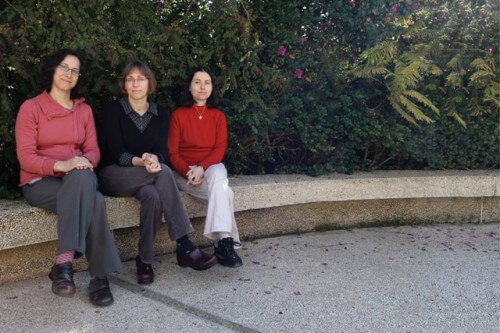Two waves of a hormonal signal cause the production of the "home" of the stem cells, and the production of the stem cells themselves

The medicine of the future aims to give a place of honor to the stem cells: with their help it will be possible, perhaps, to regenerate damaged cells, organs or tissues. Stem cells could, for example, repair a diseased heart muscle or replace brain cells damaged by stroke or Parkinson's disease. But to make this vision a reality, a lot more research work is needed. It is already clear today that it is not enough to inject the stem cells into the damaged organ; It is necessary to find a way to inject them in a way that will allow them to survive and function properly, and thus lead to healing.
The function of stem cells depends on the existence of a supportive environment, called a "niche", which is adjacent to the stem cell and serves as its base. The niche protects the stem cell, and controls its development and rate of division. It also ensures that it differentiates into a specific cell type only at the appropriate time. In fact, the niche and stem cell function as one unit. In a new study, published in the journal PLoS Biology, Weizmann Institute scientists showed how these units are formed in fruit fly larvae. The research was carried out in the laboratory of Dr. Lilach Gilboa, from the Department of Biological Control, post-doctoral researcher Dr. Dana Gantz and research student Tamar Langil.
In the developing embryo, the formation of the stem cells and the niches must be coordinated, so that each cell has its own niche. But how is the coordination done? The scientists studied the ovaries of fruit fly larvae, and discovered a clever way in which nature maintains the balance in the creation of the units: the formation of the stem cells as well as the niches is controlled by a single biochemical signal. The scientists also showed that the signal goes through a hormonal pathway similar to the one that controls ovulation in women: it goes from the brain to a gland that secretes hormones, and from there it reaches the ovaries.
The use of a single hormonal signal helps ensure that the entire process is timed with astonishing precision. In the ovary of the fruit fly larva there are two sets of embryonic cells; One is designed to develop into niches, and the other - into reproductive stem cells, which in the adult female will provide an ongoing reservoir of eggs. These two groups of embryonic cells continue to multiply, until the arrival of a hormonal signal that encourages the construction of niches in the ovaries. In the next step, another wave of the hormone reaches the ovary, but this time it causes the cells of the second group to become the stem cells of the ovaries. In other words, the same letter first produces the "home" for the stem cell, and then the cell that "resides in it".
In fact, the creation of the niches before the creation of the stem cells is extremely essential. The niches strengthen the stem cells, and thus the adult female fly, whose ovaries contain about twenty stem cell units, is able to produce dozens of eggs every day, for over a month.
These findings provide important insights regarding the relationship between stem cells and their niches. A better understanding of the molecular signals that control the formation of stem cell units may promote the future use of stem cells to regenerate damaged body organs.
